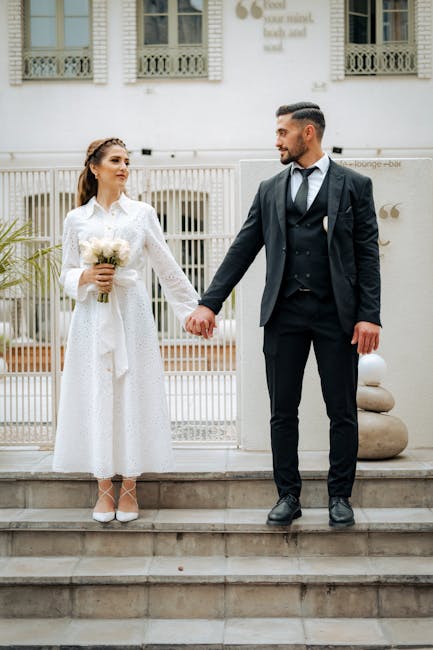90 Day Fiancé: A Deep Dive into the Drama, Relationships, and Cultural Clashes
90 Day Fiancé, the reality TV show that captivates and infuriates in equal measure, has become a global phenomenon. For years, viewers have been glued to their screens, witnessing the rollercoaster romances of couples navigating the complexities of a K-1 visa and a 90-day deadline to marry. But what is it about this show that keeps audiences hooked? This in-depth exploration delves into the drama, the relationships, the cultural clashes, and the enduring appeal of 90 Day Fiancé.
The K-1 Visa: A Ticking Clock and High Stakes
At the heart of the 90 Day Fiancé premise lies the K-1 visa, a crucial element that adds a significant layer of pressure to the already complex dynamics of international relationships. This visa, specifically designed for fiancé(e)s of US citizens, allows the foreign partner to enter the United States for a limited time – 90 days – to marry their American partner. Failure to marry within that timeframe results in deportation, creating a high-stakes scenario that plays out dramatically on screen.
The urgency of the 90-day period intensifies the emotional stakes of the show. Couples face immense pressure to make life-altering decisions within a short timeframe, often without fully knowing each other. This time constraint exacerbates pre-existing issues, leading to explosive conflicts and emotional breakdowns, contributing significantly to the show’s dramatic appeal.
Exploring the Cultural Differences and Conflicts
One of the most compelling aspects of 90 Day Fiancé is the exploration of cultural differences and the resulting conflicts. The show showcases relationships between individuals from vastly different backgrounds, exposing viewers to a wide range of customs, traditions, and perspectives. These differences often become major points of contention, leading to misunderstandings, miscommunications, and sometimes, irreconcilable differences.
From differing views on family roles and expectations to contrasting approaches to finances and personal space, the cultural clashes on 90 Day Fiancé highlight the challenges inherent in navigating cross-cultural relationships. The show doesn’t shy away from portraying these conflicts, often offering a glimpse into the complexities of navigating cultural nuances and bridging the gap between two distinct worlds.
The Cast: A Diverse Range of Personalities and Stories
The success of 90 Day Fiancé lies not just in its premise but also in the diverse range of personalities and stories featured in each season. From the seemingly perfect couples to those clearly incompatible from the start, the cast embodies a wide spectrum of human experiences. The show’s producers have a knack for casting individuals with compelling backstories, unique personalities, and dramatic arcs that keep viewers invested.

This diversity extends beyond nationalities and cultural backgrounds. The show features individuals from all walks of life, with varying levels of education, financial stability, and life experiences. This diverse representation provides a fascinating lens through which to examine the universality of love, relationships, and the human condition.

Notable Couples and Their Enduring Impact
- [Couple 1 Name]: Discuss their story and lasting impact.
- [Couple 2 Name]: Highlight their challenges and outcomes.
- [Couple 3 Name]: Analyze their unique storyline and its resonance with viewers.
The Spin-offs: Expanding the 90 Day Universe
The immense popularity of 90 Day Fiancé has led to a plethora of spin-offs, each offering a unique perspective on the world of international relationships. These spin-offs, including 90 Day Fiancé: Before the 90 Days, 90 Day Fiancé: Happily Ever After?, and 90 Day: The Single Life, further explore the lives of the couples featured in the original series, offering glimpses into their lives after the 90-day mark. They also introduce new couples and storylines, maintaining the franchise’s enduring appeal.
The Enduring Appeal: Why We Keep Watching
The enduring appeal of 90 Day Fiancé is multifaceted. It’s a show that offers a potent cocktail of drama, romance, cultural exploration, and a touch of voyeurism. Viewers are drawn to the high stakes, the emotional rollercoaster, and the opportunity to witness the complexities of human relationships unfold in real-time.
Furthermore, the show’s relatable aspects, despite the often-extraordinary circumstances, contribute to its widespread appeal. The challenges faced by the couples—communication barriers, cultural differences, family conflicts, and financial pressures—resonate with viewers on a fundamental level, reminding us of the universality of the struggles inherent in building and maintaining relationships.
The Criticisms and Controversies
Despite its immense popularity, 90 Day Fiancé has not been without its share of criticisms and controversies. Concerns have been raised about the ethical implications of showcasing relationships potentially based on exploitative dynamics. Questions around the authenticity of certain storylines and the potential for manipulation have also been raised.

However, the show’s detractors often overlook the diverse range of stories it presents, some featuring genuine love and connection, highlighting the complex realities of intercultural relationships. Ultimately, 90 Day Fiancé serves as a reflection of societal attitudes towards relationships, immigration, and cultural differences, prompting viewers to engage in thoughtful discussions about these important issues.
Conclusion: The Continuing Saga
90 Day Fiancé continues to captivate audiences worldwide, offering a blend of drama, romance, and cultural exploration that keeps viewers coming back for more. While the show has its detractors, its enduring popularity is a testament to its ability to tap into universal themes of love, relationships, and the complexities of the human experience. As the franchise continues to expand, it promises to deliver even more drama, intrigue, and cultural insights in the years to come.

